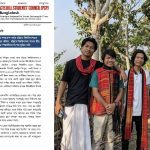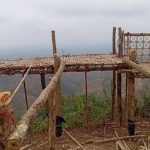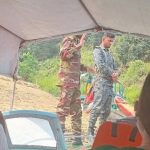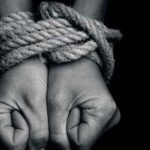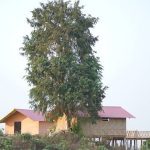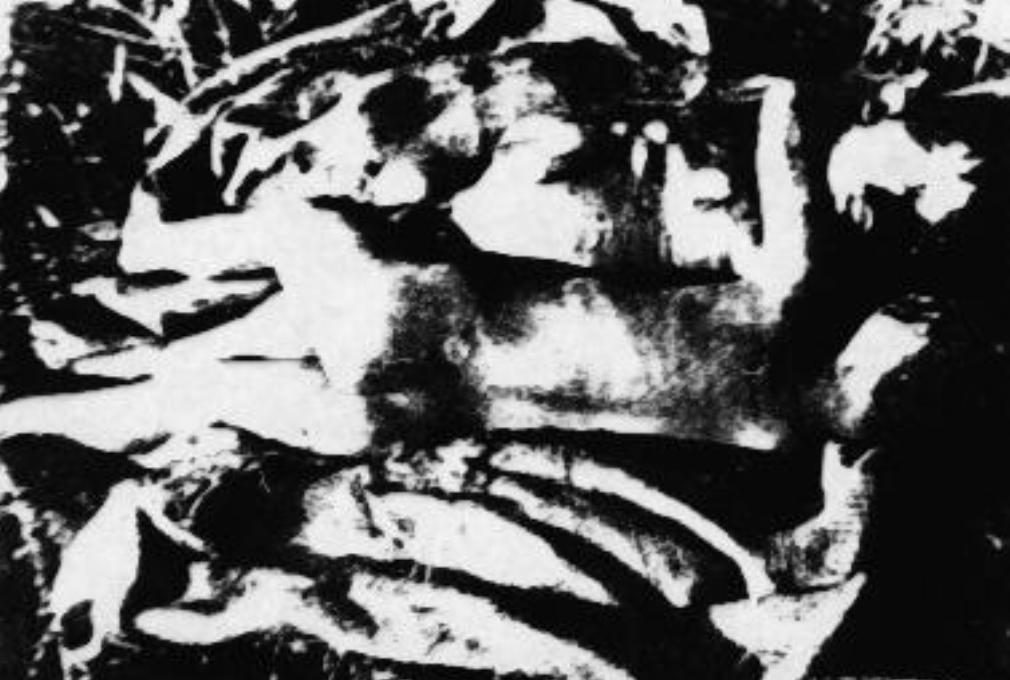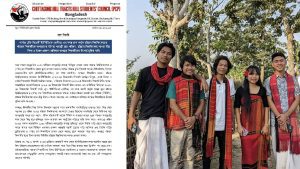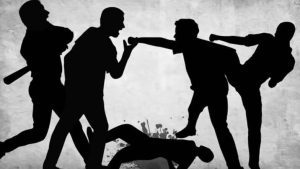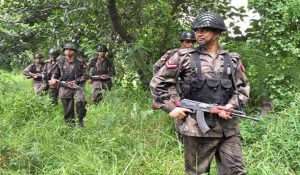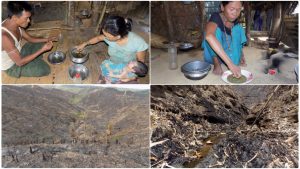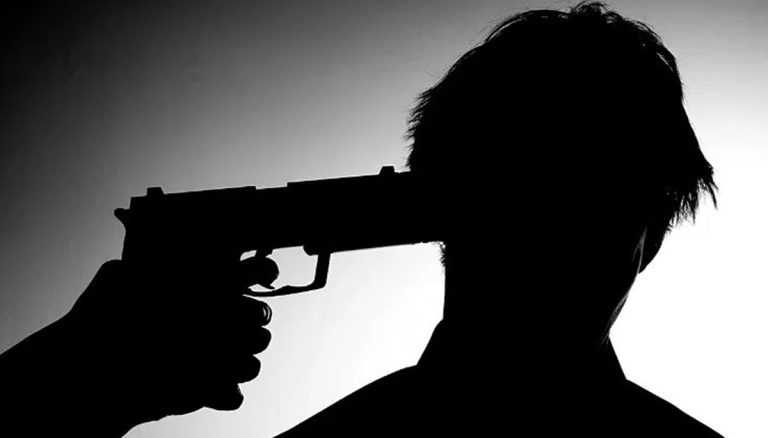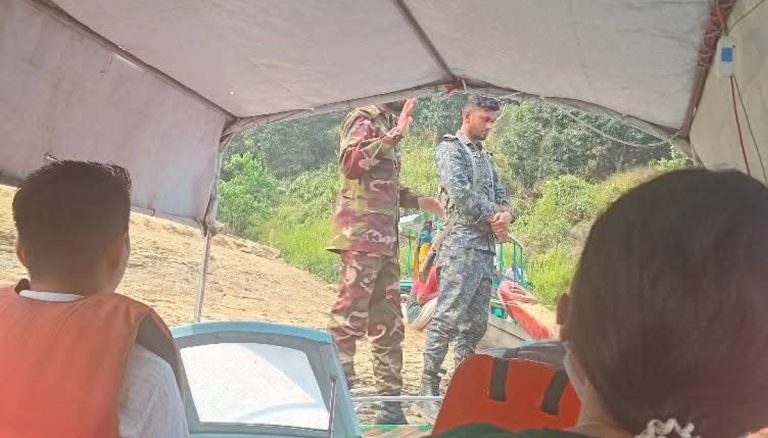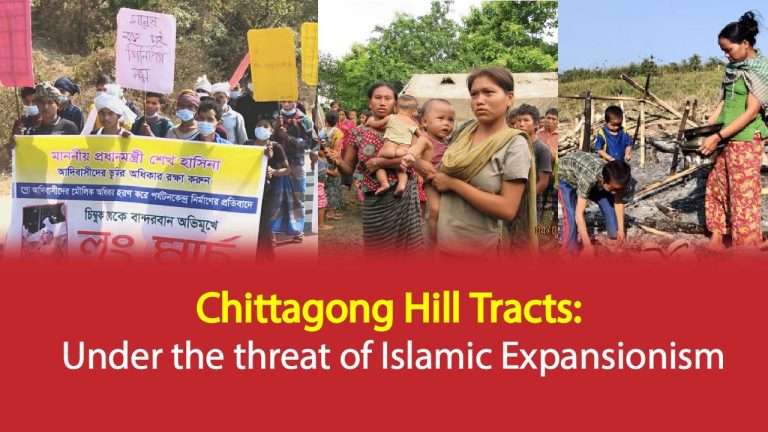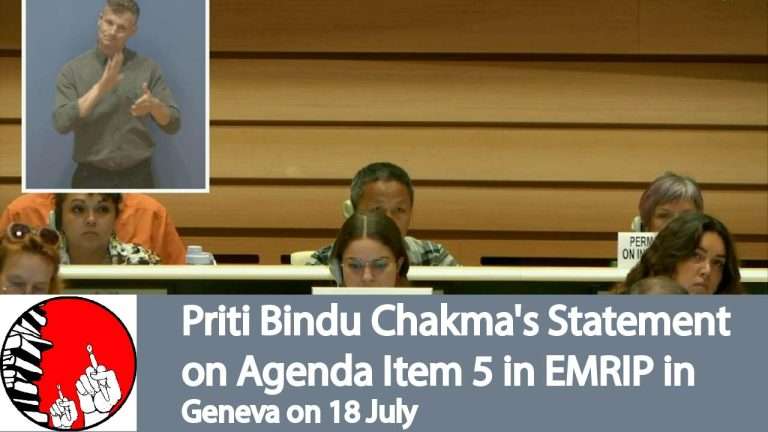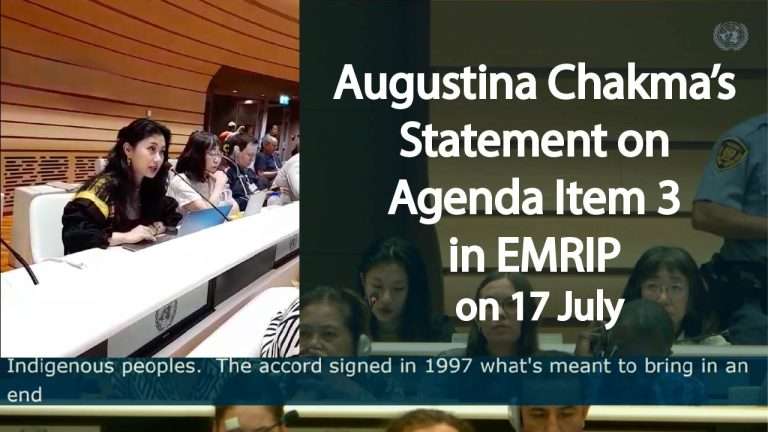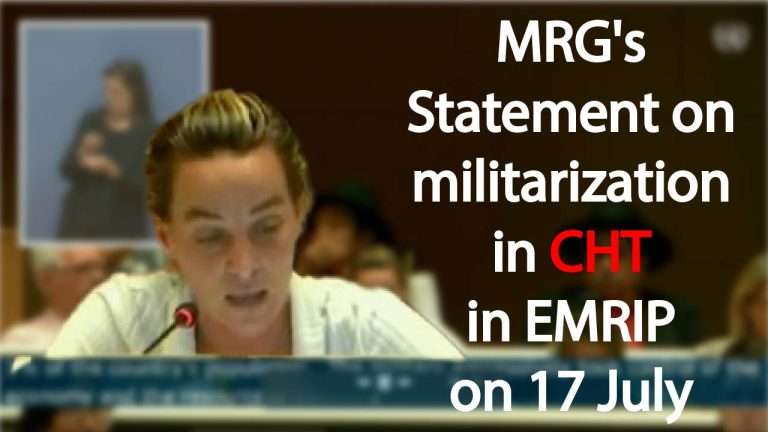Hill Voice, 4 May 2022, Special Correspondent:
Today is the 33rd anniversary of the barbaric Longadu massacre. This is one of the most inhumane horrific genocide and arson attack on indigenous Jumma people committed by the army and illegal Muslim Bengali settlers in the Chittagong Hill Tracts. The massacre and arson attack began on this day around in the evening in 1989. This brutal destruction started on 4th May and continued till 6th May.
Thirty-two Jummas including children, women and elderly persons were killed in the massacre, at least 11 were injured and 1,011 houses in nine villages around Longadu including Longadu Sadar were burnt down and looted. A government primary and a high school were set on fire. 7 Buddhist monasteries were set on fire, looted and destroyed. Thousands of people became homeless and internally displaced. Many Jummas were forced to take refuge in neighboring India.
Onset of the attack:
Abdur Rashid Sarkar, the then chairman of Longadu Upazila Parishad and leader of the Bengali Settlers was shot dead in the Longadu Sadar area between 4:00 pm to 5:00 pm on May 4, 1989. It is believed that Abdur Rashid Sarkar was killed due to a dispute among the Bengali settlers over the post of chairman of the next upazila council tenure.
Without any investigation into the incident, the then military government and army took the incident as an excuse to carry out conspiratorial destruction on the Jummas. It is learnt that Major Zakir Hossain of the 14th East Bengal Regiment of the Bangladesh Army of the Mainimukh Army Zone of Longadu Upazila immediately created communal tension by giving a communal flavor to the incident and instructed by calling the leaders of the Village Defense Party (VDP) and infiltrating Bengali settlers to attack the Jummas.
Genocide and arson:
Armed VDP members and Bengali settlers with the direct support of the army were organized and launched attack on the Jummas at around 6:15 pm on the instructions of Major Zakir Hossain. First in the Jumma inhabited Tintila area of Longadu Sadar, then a few miles apart Manikjor Chhara, Batyapara, Langudu Baradam, Mahajan Para, Sonai, Bamey Atarkachhara, Daney Atarkachhara and a total of 9 villages were attacked, looted and set on fire. An English report published and circulated by the Information and Publicity Department of the Jana Samhati Samiti on 15 July 1989 put the death toll at 32. In some statistics this number is mentioned as at least 50.
The main perpetrators and leaders of the attack were:
(1) Major Zakir Hossain, 14 EBR, Bangladesh Army, Mainimukh Army Zone Headquarters, Longadu, (2) Yusuf Ali (Settler), Address- Islamabad (Settler Settlement), Sonai Area, Longadu, (3) Ruhul Amin (Settler), Member, Mainimukh Union Council, Sonai Area, Longadu, (4) Nurul Islam Talukder, Address- Sonai Area, (5) Siraj (Settler), Chairman, Atarkachhara Union Parishad, Longadu.
Victims of the genocide:
(1) Mrs. Amita Chakma (36), wife of Anil Bihari Chakma, village-Tintila, (2) Murati Mohan Chakma (35), son of Hema Chandra Chakma, village- Manikya Karbari Para, he was shot dead at Anil Bihari Chakma’s residence. And he was a government employee, (3) Sajal Chakma (9), son of Murati Mohan Chakma, address- do, (4) Sundajya Chakma (60), son of Palangya Chakma, village-Tintila, he was killed by sharp weapon at the residence of Anil Bihari Chakma, (5) Joy Kumar Chakma (60), son of late Indramoni Chakma, village- do, he too was killed by sharp weapon at the residence of Anil Bihari Chakma, (6) Mrs. Emphali Chakma (65), wife of Joy Kumar Chakma, village- do. She was also killed by a sharp weapon at the residence of Anil Bihari Chakma. (7) Suryamani Chakma (36), son of unknown, village- Bagachatar, also killed at the residence of Anil Bihari Chakma with a sharp weapon. (8) Sushama Ranjan Chakma (58), son of late Dhaneshwar Chakma, village- Mahajan Para, Bagachatar Union, was also killed by a sharp weapon at the residence of Anil Bihari Chakma, (9) Jagat Basu Chakma (35), son of Chitra Ranjan Chakma, village-Tintila, he was hacked to death, (10) Mrs. Kalindi Chakma (30), wife of Jagat Basu Chakma, village- do, was also hacked to death, Village- do, (11) Mrs. Kishori Bala Chakma (60), wife of Chitta Ranjan Chakma, Village- do, She was also hacked to death, 12) Bhagya Devi Chakma (20), daughter of Chitta Ranjan Chakma, village- do, was also hacked to death, (13) Rabendu Chakma (12), son of Subhash Basu Chakma, village- do, was also hacked to death, (14) Samar Bikash Chakma (6), son of Subhash Babu Chakma, village- do, was also hacked to death, (15) Mrs. Namita Chakma’s a three-year old baby girl, village- do, she was also hacked to death, (16) Naba Kumar Chakma (55), son of Tagalakya Chakma, village- Tintila, she was shot dead, (17) Jagaran Chakma (14), son of late Vijay Shil Chakma, village- Merung, Dighinala Upazila, Khagrachhari, shot at the residence of Anil Bihari Chakma, (18) Shanti Ranjan Chakma (14), son of Lakshna Chakma, village- Tintila, he was shot dead in Tintila market, (19) Mrs. Charubala Chakma (55), wife of Manjangya Chakma, village- do, she was hacked to death, (20) Ishwar Chakma (45), son of Subarna Chakma, village- Batyapara, he was hacked to death in Mainimukh market, (21) Mrs. Akpali Chakma (63), wife of Rizapya Chakma, village- Langudu Baradam, she was tied up and burnt alive, (22) Mrs. Tarulata Chakma (60), husband- Dhalachan Chakma, village- Payasaram Mahajan Para, she too was tied up and burnt alive, (23) Balaram Chakma (65), son of- late Kandara Chakma, village- Sonai, he was hacked to death, (24) Mrs. Buri Chakma (65), wife of late Kailash Chandra Chakma, village- Sonai, she was also hacked to death, (25) Mrs. Nandarani Chakma (65), wife of Golak Dhan Chakma, village- Sonai, she was also hacked to death, (26) Mrs. Paysabi Chakma (65), wife of Kulukya Chakma, village- Sonai, she was also hacked to death, (27) Priya Chakma (65), son of Ulleya Chakma, Village- Karalyachhari, he was also hacked to death, (28) Kyamong Marma (55), son of Hla Sathuai Marma, Village- Harbang, Cox’s Bazar, he was hacked to death on his way back from Karalyachhari Bazaar, (29) Ranga Mong Marma (50), village- do, was also hacked to death on his way back from Karalyachhari bazar, (30) Jayanta Chakma (60), son of Surya Mohan Chakma, village- Daney Atarkachhara, he was hacked to death, (31) Kamal Krishna Karbari (65), son of Kalya Chakma, village- Eurengchhari , he was also hacked to death, (32) Mrs. Amiya Tara Chakma (45), wife of Sudhangshu Bimal Chakma, village- Tintila, she was an employee of the family planning office, she was shot dead.
The seriously injured were:
(1) Sudhangshu Bimal Chakma (50), son of late Chandranath Chakma, village-Tintila, he was a government employee of agriculture department, (2) Mrs. Lakshanadevi Chakma (30), wife of Probhat Chakma, village- Bagachatar, (3) Mrs. Purnashova Chakma (35), wife of late Vijay Shil Chakma, village- Merung, Dighinala, (4) Pawan Chakma (36), son of unknown, he was injured in the attack of Anil Bihari Chakma’s house, (5) Mrs. Dolly Chakma (21), wife of Dhana Chakma, village- Khedar Mara, Baghaichari, (6) Holy Chakma (3), daughter of Chitta Ranjan Chakma, Village- do, (6) Mrs. Rupali Chakma (26), wife of Sneha Ranjan Chakma, Village- do, (9) Shanti Bikash Chakma (36), son of Sharat Kumar Chakma, Village- Longadu Baradam, (10) Galoi Chakma (65), son of Kalachan Chakma, Village- Batyapara, (11) Mrs. Namita Chakma (19), wife of Mangal Chandra Chakma, village-Tintila.
Attacked Buddhist monasteries:
(1) Tintila Bana Bihara, (2) Manorama Buddhist temple, Atarakachhara, (3) Dashobal Dharmaratna Buddhist Monastery, Sonai, (4) Sonai Buddhist Temple, Sonai, (5) Karalyachhari Buddhist temple, Karalyachhari, (6) Baradam Buddhist temple, Longadu Baradam.
The schools burnt:
(1) Government Primary School, Sonai and (2) Longadu Government High School, Baradam.
After the news of the Longadu massacre spread, a shadow of mourning descended and caused suppressed anger in all the indigenous Jummas of three hill districts and the country including the Rangamati Hill District. Even then the military rule of the dictator Ershad government was going on. On the other hand, anti-Ershad movement was also going on in the plains across the country. However, at that time in the Chittagong Hill Tracts, the military rulers were very powerful. Processions, meetings, protests, demonstrations were restricted. Yet the aggrieved, protesting, conscientious and conscious people could not remain silent in this brutal barbarism.
On 7 May 1989, the Jumma people of Longadu Upazila sent a memorandum to the President of Bangladesh protesting the genocide. They demanded an investigation into the incident and safety of their lives.
On 9 May 1989, Chakma Circle Chief and Raja Barrister Debashish Roy, former Adviser to the President of Bangladesh Subimal Dewan, former Member of Parliament Chaithoai Royaza, former Member of Parliament Sudipta Dewan including 22 other leaders of Jumma submitted a memorandum in protest of the Longadu genocide. In the memorandum, they mentioned that on 5 May 1989, a meeting was held at Tintila in Longadu Upazila by Brigadier Shafat of Rangamati’s 24th Infantry Division and some Jumma leaders of Rangamati town with infiltrating Bengali Muslim settlers and some Jumma people. A Muslim settler at the meeting shouted that ‘We have not done anything (genocide) so far unless we get order and instructions from the government and we will not do anything unless we get more order and instructions’. The statement of the Muslim settler clearly shows how and who committed the Longadu massacre.
The memorandum demanded a judicial inquiry into the incident, publication of a white paper, exemplary punishment of the culprits, withdrawal of Bengali settlers from the Chittagong Hill Tracts including Longadu, and compensation for the victims. On 21 May 1969, the newly formed Greater Chittagong Hill Tracts Student Council organized a silent procession in protest of the genocide. In Dhaka, various national student organizations also participated in the silent procession expressing solidarity. On behalf of the students, a memorandum containing 6 points of demand was submitted to the Home Minister.
In addition, protests against the genocide erupted in various ways at the initiative of various human rights personalities and quarters at home and abroad.
But even then and so far no action has been taken to investigate the Longadu genocide and take appropriate action to punish the perpetrators. Besides, no action has been taken to compensate the affected families.
In the Chittagong Hill Tracts, 15 genocides were committed by state forces and Bengali settlers. In addition to the May 4, 1989 genocide in Longadu, two other horrific massacres took place in longadu. On July 30, 1988, Muslim settlers carried out a massacre at Battala in Longadu. On that day, 9 Jumma villagers, including Rajanikanta Chakma, a former member of the Union Council, were attacked and killed by settlers at Battala on their way back home by boat from Mainimukh Bazar. On the other hand, another massacre was carried out on February 2, 1992 by the Bengali settlers and the VDP at Mallya of Longadu bordering the Baghaichhari upazila. In this incident 14 Jummas were brutally killed.
In addition to these massacres, there have been several communal attacks in Longadu, hundreds of houses have been burnt down. Many Jumma women are killed and raped.
Needless to say, none of these incidents were brought to justice and the culprits were not punished. Apart from the military government, no democratically elected government has come forward in this regard.
Even the Awami League or the grand alliance government led by Sheikh Hasina, known as a non-communal and pro-liberation party and government, has not shown any sincere initiative to ensure justice for these heinous crimes against humanity. Thus, day after day, year after year, the nasty incidents like that are happening in the Chittagong Hill Tracts. As if Leader, leadership, government, administration, judiciary, state, no one has any responsibility, no conscience, and no remorse. As if with their consent, these massacres, rapes, communal attacks, land grabbing and destruction of Jummas are being organized continuously. Even in the 50 years of independence, such a situation of the state and the government is very sad and very shameful.

